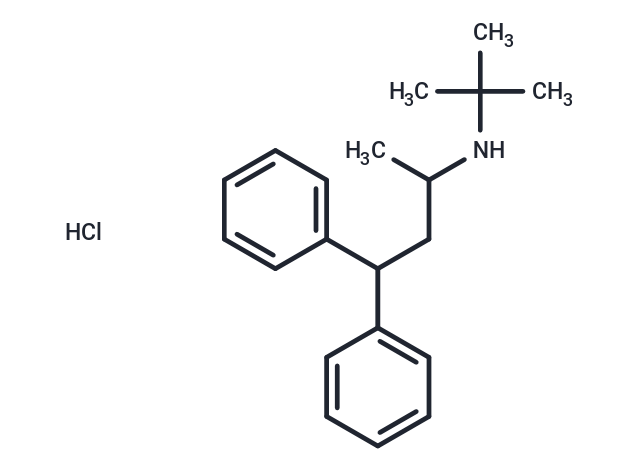Shopping Cart
- Remove All
 Your shopping cart is currently empty
Your shopping cart is currently empty

Terodiline hydrochloride is an antagonist of M1-selective muscarinic receptor (mAChR)(Kbs of 15, 160, 280, and 198 nM in rabbit vas deferens (M1), atria (M2), bladder (M3) and ileal muscle (M3), respectively).

| Pack Size | Price | Availability | Quantity |
|---|---|---|---|
| 25 mg | $1,220 | 1-2 weeks | |
| 50 mg | $1,590 | 1-2 weeks | |
| 100 mg | $2,430 | 1-2 weeks |
| Description | Terodiline hydrochloride is an antagonist of M1-selective muscarinic receptor (mAChR)(Kbs of 15, 160, 280, and 198 nM in rabbit vas deferens (M1), atria (M2), bladder (M3) and ileal muscle (M3), respectively). |
| In vivo | Terodiline treatment with 80 mg/kg; S.C. is equipotent in inhibiting intravesical bladder pressure and carbachol-induced salivary secretion with ID50 of 24 and 35 mg/kg, respectively, and in increasing pupil diameter with ED50 of 59 mg/kg. |
| Molecular Weight | 317.9 |
| Formula | C20H28ClN |
| Cas No. | 7082-21-5 |
| Relative Density. | no data available |
| Storage | Powder: -20°C for 3 years | In solvent: -80°C for 1 year | Shipping with blue ice. |

Copyright © 2015-2025 TargetMol Chemicals Inc. All Rights Reserved.